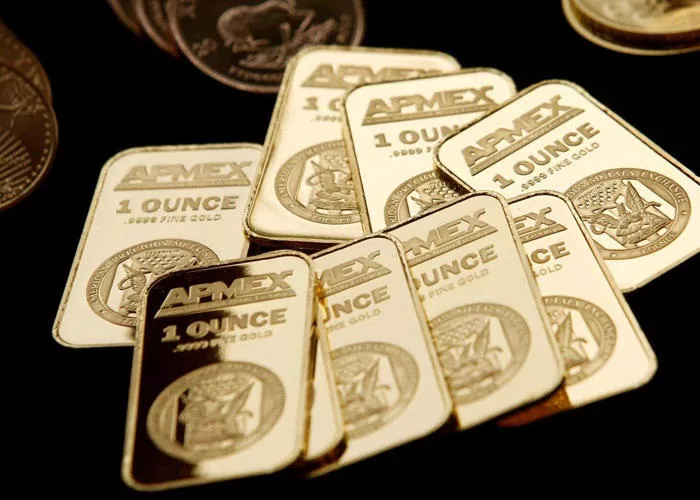Gold investors are remaining bullish as they look ahead to 2025, driven by persistent concerns over global instability and the potential economic impact of Donald Trump’s return to the White House. The precious metal posted its most significant annual gain since 2010 in 2024, surging 27% to nearly reach $2,800 per ounce, marking a historic high.
The rally in gold prices last year was fueled by three key factors: substantial purchases by central banks, especially those in China and other emerging markets; the U.S. Federal Reserve’s monetary easing, which increased gold’s appeal as a non-yielding asset; and the metal’s traditional role as a safe haven amid ongoing geopolitical tensions, such as the wars in Ukraine and the Middle East.
These drivers remain largely intact as we enter 2025, with investors continuing to view gold as a hedge against potential market instability. Adding to the uncertainty, market participants are also anticipating the economic consequences of Trump’s second term. Investors are particularly concerned about how Trump’s policies may affect trade relations, inflation, and broader global economic conditions, further driving demand for gold as a wealth-preserving asset.
Greg Sharenow, portfolio manager at Pacific Investment Management Co., emphasized that gold will remain an attractive option for central banks and high-net-worth individuals seeking diversification. “Investment diversification through bullion purchases is a trend that will persist,” he said.
In fact, some investors have become more heavily weighted in gold. U.S. hedge fund Quantix Commodities, for instance, has allocated 30% of its holdings to gold, nearly double the metal’s proportion in the Bloomberg Commodity Index. Senior executive Matt Schwab stated that Quantix plans to maintain this “overweight” position throughout 2025, forecasting gold prices could reach $3,000 per ounce by the end of the year.
Wall Street banks are also bullish on gold. Bank of America and JPMorgan Chase & Co. have set a target of $3,000 per ounce by year-end 2025, while UBS is predicting prices will hit $2,900. As of early January, gold was trading above $2,600 per ounce.
However, gold’s performance has faced some headwinds since the U.S. presidential election on November 5, 2024. Following Trump’s victory, a rally in the U.S. dollar, stock markets, and Bitcoin led to a temporary pullback in gold prices. Still, in the long run, many analysts believe gold will remain a favorable investment, particularly as Trump’s proposed policies could exacerbate trade tensions and slow economic growth.
Economists suggest that Trump’s stance on tariffs and trade could lead to inflationary pressures, complicating the Federal Reserve’s ability to continue reducing interest rates in 2025. After a quarter-point rate cut in December 2024, Fed officials signaled a cautious approach, with only two rate cuts anticipated in the year ahead.
DWS Group’s Darwei Kung noted that if trade relations deteriorate due to new Trump policies, equity markets could suffer, further driving up demand for gold as a risk hedge. Kung expects gold to rise to $2,800 by the end of 2025.
On the global front, potential trade conflicts between the U.S. and other nations could prompt central banks to accelerate monetary easing, which would likely benefit gold. Aline Carnizelo, managing partner at Frontier Commodities, predicted that gold prices could exceed $2,800 per ounce in 2025, driven by these developments.
Portfolio manager Patrick Fruzzetti of Rose Advisors in New York also pointed to the growing U.S. debt load as a significant factor influencing gold demand. The U.S. national debt has ballooned to approximately $28 trillion, up from less than $17 trillion at the end of 2019, and the federal deficit is expected to exceed 6% of GDP in 2025, according to the Congressional Budget Office.
Concerns about the U.S. government’s ability to manage its debt have led some investors to shy away from Treasuries. Jeff Muhlenkamp, portfolio manager at Muhlenkamp & Co., said he is allocating about 12% of his fund to gold as a hedge against such risks. Fruzzetti, meanwhile, remains steadfast in his gold position, stating, “Until they can show me different, I am not downsizing my gold position,” in reference to the new administration’s fiscal policies.
As gold continues to shine amidst a turbulent global landscape, investors will be watching closely to see how Trump’s second term unfolds and whether its economic implications can sustain the rally into 2025.
Related topics:
- India Surpasses China in Gold Purchases, Buying 51% More in Three Months
- Gold Rates Skyrocket in Chennai on Diwali, 24K Gold Exceeds Rs. 81,000 Per 10 Grams
- Gold Price Outlook: XAU/USD Breaks Key Resistance Levels; What’s Next?


